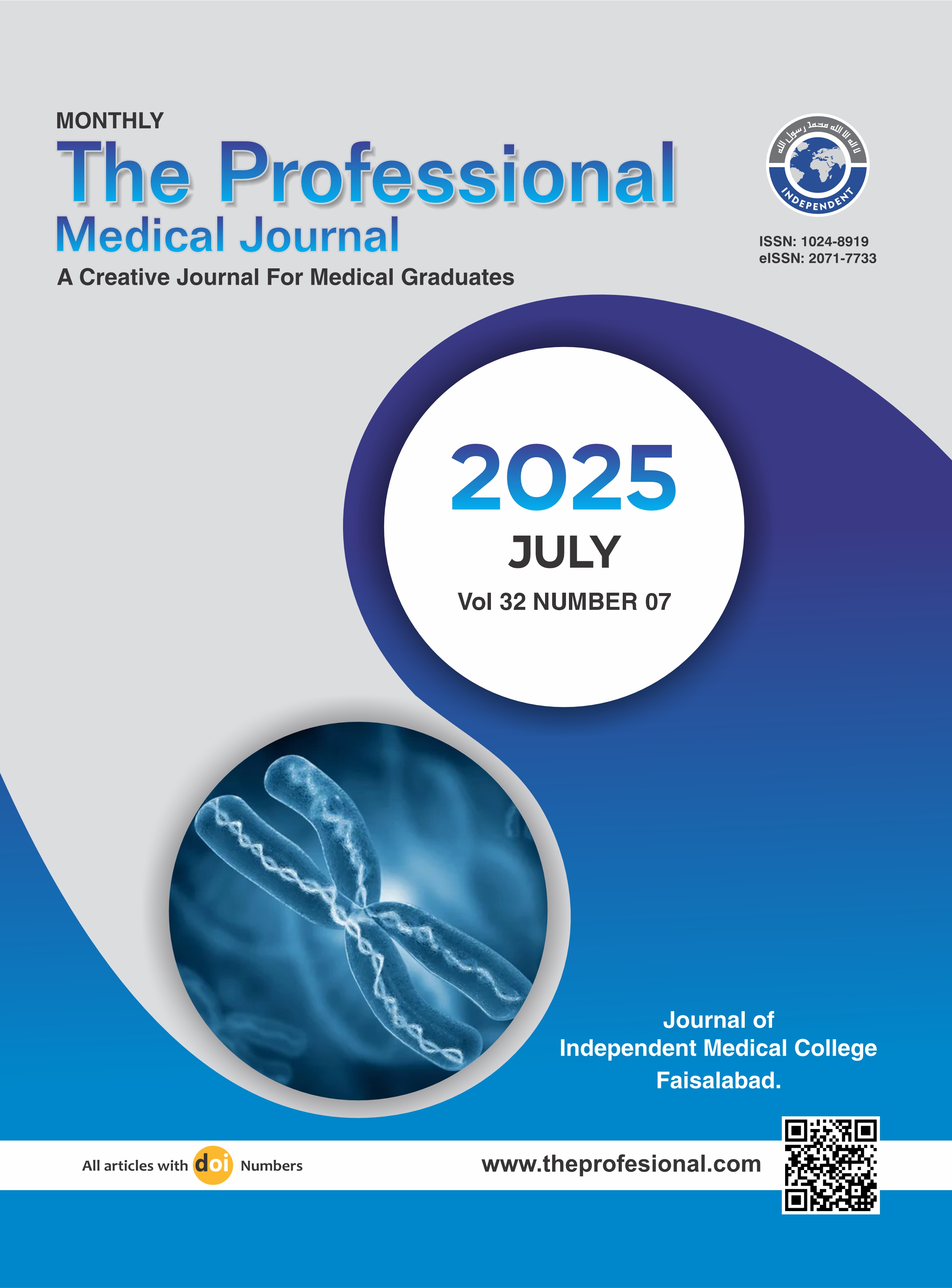The feasibility and efficacy of TIPP (Trans inguinal preperitoneal repair) versus (TAPP) Transabdominal preperitoneal repair for inguinal hernia.
DOI:
https://doi.org/10.29309/TPMJ/2025.32.07.9713Keywords:
Inguinal Hernia, Preperitoneal Repair, Pain, Recurrence, TAPP, TIPPAbstract
Objective: To compare the feasibility and efficacy of TIPP versus TAPP in terms of operating time, postoperative acute and chronic inguinal pain, complication rate, recurrence rate and hospital stay. Study Design: Prospective Comparative study (RCT). Setting: Bahawal Victoria Hospital, Bahawalpur. Period: 01-02-21 to 30-11-24. Methods: 100 patients were equally divided into group A and group B by simple random sampling. In Group A, the trans inguinal preperitoneal (TIPP) repair was performed, and in group B trans abdominal preperitoneal (TAPP) repair was performed. Mean operating time, postoperative acute and chronic inguinal pain, complication rate, recurrence rate and hospital stay were recorded. Pain was evaluated by visual analogue score ranging from 0-10. Data was collected on a pro forma and analysed using SPSS Statistics version 27. The Pearson chi-squared test was used for the categorical variables and t tests for continuous variables. Results: Mean operating time in TIPP group was significantly shorter than TAPP group (59.54 ± 11.71 versus 95.40 ±15.81 and p-value <0.001). Acute postoperative pain score after 24 and 48 hours was significantly was higher in TIPP group than TAPP group (4.98± 0.99 vs.4.92 ± 0.92, p-value 0.05 and 2.36± 0.96 vs.1.94± 0.93 p-value 0.029 respectively). Complication rate was lower in TAPP than TIPP (9% vs.15%). However, recurrence rate was equal in both groups (1% vs. 1%) but hospital stay was significantly shorter in TIPP than TAPP (.1.26± 0.69 vs1.66± 0.68, p-value 0.005). Conclusion: Both TIPP and TAPP repair are effective for the treatment of inguinal hernia. TIPP repair has higher feasibility in terms of significantly shorter operating time than TAPP repair where as TAPP has higher efficacy in terms of lower post operative pain (acute and chronic) and complication rate than TIPP repair. TIPP may be a better approach in older patients who are unfit for general anesthesia and TAPP for the younger patients.
Downloads
Published
Issue
Section
License
Copyright (c) 2025 The Professional Medical Journal

This work is licensed under a Creative Commons Attribution-NonCommercial 4.0 International License.


